SpaceX’s Falcon 9 rocket, with the company’s Dragon spacecraft atop, lifts off from NASA Kennedy Space Center’s Launch Complex 39A in Florida on March 14, 2023, beginning the company’s 27th resupply services mission to the International Space Station. Liftoff occurred at 8:30 p.m. EDT. Credit: NASA
SpaceX’s Dragon spacecraft – carrying several thousand pounds of critical science, hardware, and crew supplies – is on its way to the International Space Station (ISS) following a successful launch from NASA’s Kennedy Space Center in Florida. The company’s Falcon 9 rocket lifted off from Launch Complex 39A at 8:30 p.m. EDT, beginning SpaceX’s 27th resupply services mission to the orbiting laboratory.
SpaceX’s Falcon 9 rocket, with the company’s uncrewed Dragon spacecraft on top, lifted off from NASA’s Kennedy Space Center in Florida right on time, at 8:30 p.m. EDT. Credit: NASA
Dragon is now safely in orbit. A series of thruster firings will help Dragon reach the space station about 36 hours later. Upon its arrival, it will autonomously dock to the station’s Harmony module, with NASA astronaut Woody Hoburg monitoring operations. Live coverage of Dragon’s arrival will air on NASA TV, the NASA app, and the agency’s website beginning at 6:15 a.m. Thursday, March 16. Docking is scheduled for approximately 7:52 a.m.
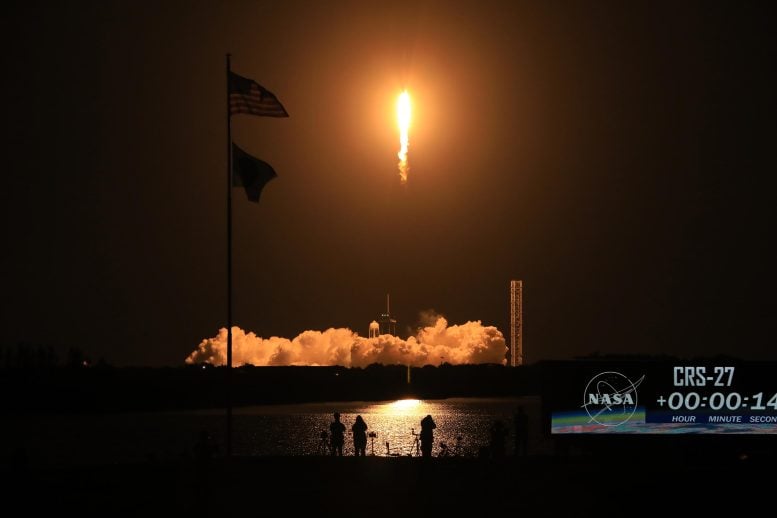
SpaceX’s Falcon 9 rocket, with the company’s Dragon spacecraft atop, lifts off from NASA Kennedy Space Center’s Launch Complex 39A in Florida on March 14, 2023, beginning the company’s 27th resupply services mission to the International Space Station. Liftoff occurred at 8:30 p.m. EDT. Credit: NASA/Kim Shiflett
In addition to delivering station supplies, fresh food, and hardware, Dragon also will deliver multiple science and research investigations, including the final two experiments of the National Institutes for Health and International Space Station National Laboratory’s Tissue Chips in Space initiative. Both experiments – the Cardinal Heart 2.0 and Engineered Heart Tissues-2 – use small devices containing living cells that mimic functions of heart tissues and organs to understand the role of microgravity on human health and use this information to improve health on Earth.
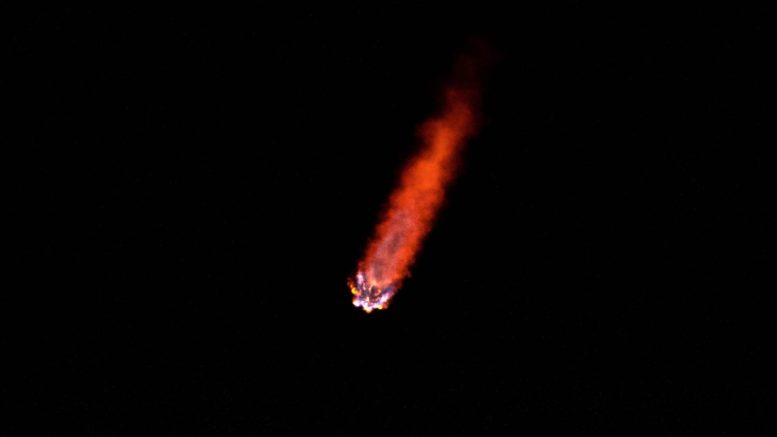
A SpaceX Falcon 9 rocket soars upward after its liftoff from Launch Complex 39A at NASA’s Kennedy Space Center in Florida on March 14, 2023, on the company’s 27th Commercial Resupply Services mission for the agency to the International Space Station. The Dragon spacecraft will deliver more than 6,000 pounds of science and research, supplies, and equipment to the crew aboard the space station. Credit: NASA/Kim Shiflett
Dragon will spend about a month attached to the space station before autonomously undocking and returning to Earth with research and return cargo, splashing down in the off the coast of Florida.
Liftoff occurred at 8:30 p.m. EDT, as SpaceX’s Falcon 9 rocket rumbled off the pad at Launch Complex 39A at NASA’s Kennedy Space Center in Florida. This began Dragon’s two-day journey to the International Space Station.
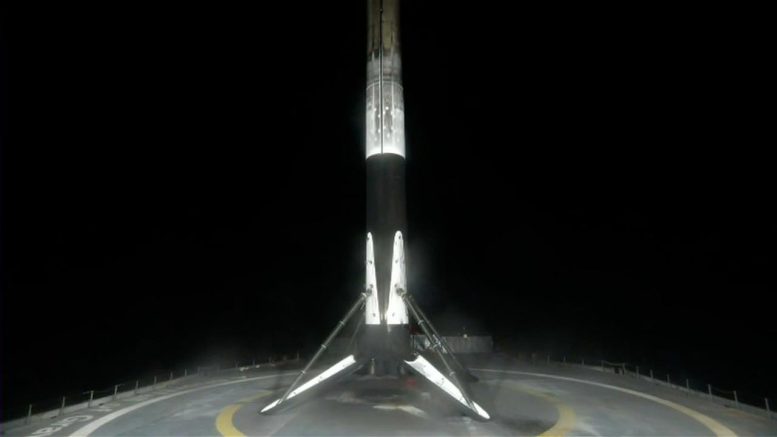
The first stage of SpaceX’s Falcon 9 rocket lands on the company’s drone ship “A Shortfall of Gravitas” shortly after lifting off from Kennedy Space Center’s Launch Complex 39A in Florida for the 27th resupply services mission to the International Space Station on March 14, 2023. Credit: SpaceX
Soon after, the nine Merlin engines in the Falcon 9 rocket’s first stage finished their burn, and the first stage separated from the vehicle. A little more than five minutes later, as the second stage continued carrying Dragon on its journey, the Falcon 9 rocket’s first stage stuck the landing. It touched down successfully on the drone ship “A Shortfall of Gravitas” in the Atlantic Ocean. Today’s launch marked the seventh flight for this Falcon 9, and it is the second Dragon flight to the International Space Station this year – the first occurring just under two weeks ago.
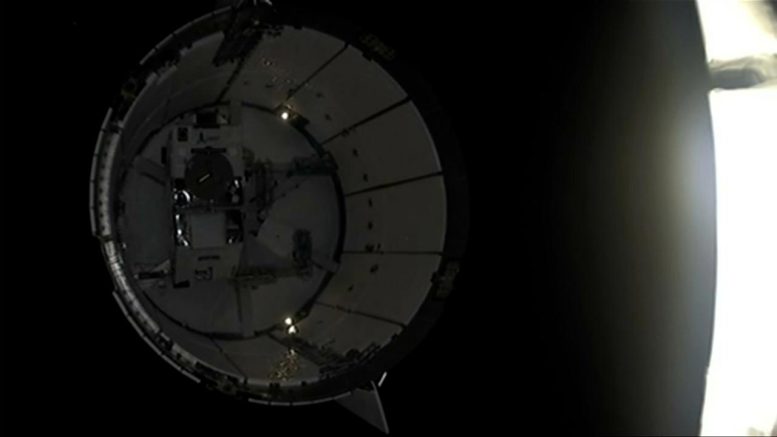
SpaceX’s Dragon spacecraft separates from the Falcon 9 rocket’s second stage during NASA’s SpaceX 27th commercial resupply services mission to the International Space Station on March 14, 2023. Dragon will rendezvous with the space station on March 16 at approximately 7:52 a.m. EDT. Credit: NASA
Next, SpaceX’s uncrewed Dragon spacecraft separated from the Falcon 9 rocket’s second stage, as the spacecraft continues its journey to the International Space Station to deliver critical supplies, equipment, and material to support multiple science and research experiments that will take place aboard the orbiting laboratory.
Dragon is expected to arrive at the space station around 7:52 a.m. EDT Thursday, March 16, docking to the station’s Harmony port – recently vacated by SpaceX’s crewed Dragon, named Endurance, which returned NASA’s SpaceX Crew-5 crew members Nicole Mann, Josh Cassada, Koichi Wakata, and Anna Kikina to Earth on March 11.
Fun Facts About This Launch
- This is the seventh flight of this SpaceX Falcon 9 rocket
- Tonight’s launch marks SpaceX’s second Dragon launch of 2023 and the company’s 216th mission overall
- This is the third flight for this uncrewed Dragon spacecraft
- Teams plan to recover the Falcon 9’s first stage following its return to Earth – if successful, this will be the 178th recovery of an orbital class rocket
- Tonight’s recovery operations are being managed by an all-female crew stationed on SpaceX’s drone ship “A Shortfall of Gravitas” off the coast of Florida
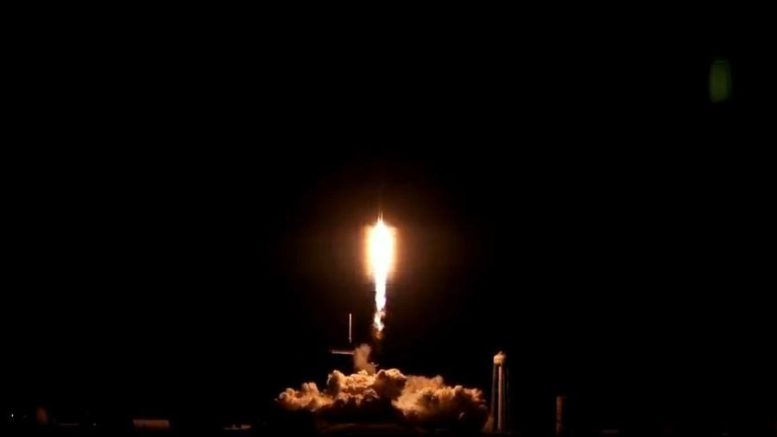
SpaceX’s 27th commercial resupply mission lifted off from Kennedy Space Center at 8:30 p.m. EDT, carrying over 6,200 lbs. of science, supplies, and food for the international crew. Credit: NASA
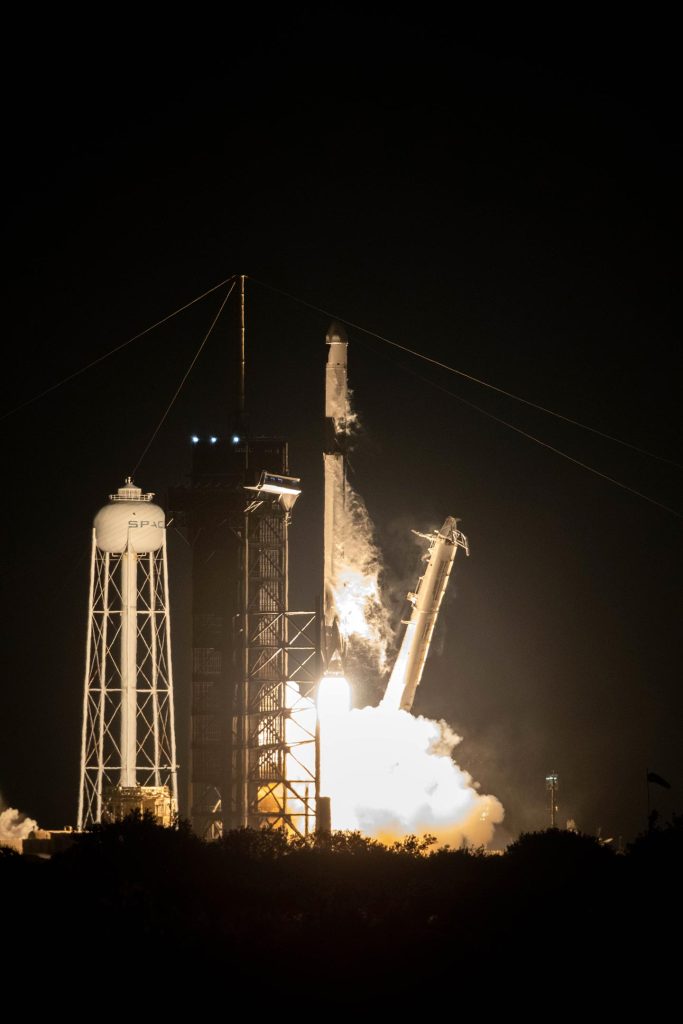
The SpaceX Falcon 9 rocket carrying the Dragon spacecraft lifts off from Launch Complex 39A at NASA’s Kennedy Space Center in Florida on March 14, 2023, on the company’s 27th commercial resupply services mission for the agency to the International Space Station. Liftoff was at 8:30 p.m. EDT. Dragon will deliver more than 6,000 pounds of cargo, including a variety of NASA investigations, supplies, and equipment to the crew aboard the space station, including the final two experiments comprising the National Institutes for Health and International Space Station National Laboratory’s Tissue Chips in Space initiative, Cardinal Heart 2.0 and Engineered Heart Tissues-2. The spacecraft is expected to spend about a month attached to the orbiting outpost before it returns to Earth with research and return cargo, splashing down off the coast of Florida. Credit: NASA/Kim Shiflett
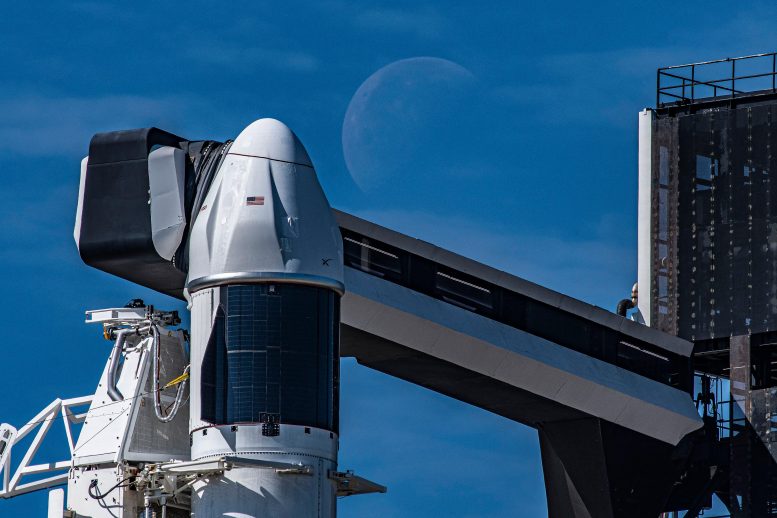
Seen here is an up-close view of the SpaceX Dragon spacecraft atop the company’s Falcon 9 rocket in the vertical position at NASA’s Kennedy Space Center in Florida on Tuesday, March 14, 2023, in preparation for the 27th commercial resupply services launch to the International Space Station. The mission will deliver new science investigations, supplies, and equipment to the crew aboard the space station. Credit: SpaceX
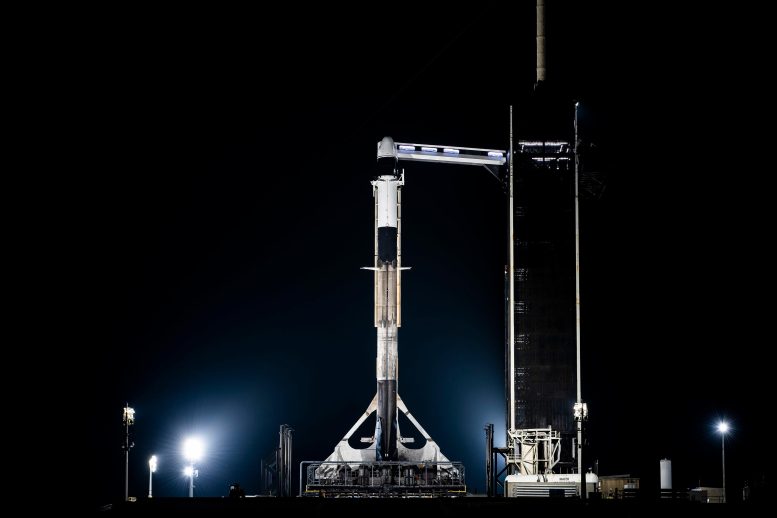
A SpaceX Falcon 9 rocket, with the company’s Dragon spacecraft atop, is raised to a vertical position at NASA Kennedy Space Center’s Launch Complex 39A on March 13, 2023, in preparation for the 27th commercial resupply services launch to the International Space Station. The mission will deliver new science investigations, supplies, and equipment to the crew aboard the space station. Liftoff is scheduled for 8:30 p.m. EDT on Tuesday, March 14, from Kennedy’s Launch Complex 39A. Credit: SpaceX




